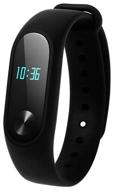
Review on 📷 Canon EOS 77D Camera Body by Knate Scarpelli

Miniature DSLR for travel, hiking and vlogging
I was planning to buy a Rebel SL2 or T7i to back up my 80D but due to Canon's spring discount offer the Canon EOS 77D Benjamin fell below the T7i. A week later I found the 77D on my doorstep. The 77D is essentially a cross between the Rebel and the 80D: a Rebel T7i form factor and a build with many of the controls and features of the 80D. While not as sturdy as the 80D, the 77D fits my medium-sized hands well, with plenty of grip and well-placed controls. Controls can be operated by touch while looking through the viewfinder, so adjustments can be made on the fly. The touchscreen is bright, responsive, and ideal for menu navigation. The only negative is the on/off button: hard and cheap to the touch. Luckily, I rarely turn my cameras off — sleep mode does the trick — but I felt like I might break the damn thing with every use. Autofocus is fast and accurate, basically the same as the 80D. The 45-point phase-detection AF system (viewfinder) covers most of the frame, making it easy to create off-center compositions in low-light conditions. There are several situations where this camera cannot focus. Canon's autofocus mode and point selection are advanced, fast and easy to use. I usually manually select areas and individual AF points while looking through the viewfinder: press the AF select button and turn one of the wheels, or press the rocker button. AF points can also be selected on the touchscreen: take your eyes off the viewfinder and AF modes are instantly displayed on the LCD. The dual pixel autofocus used for Live View and video is amazingly flexible, accurate and many times faster than hybrid. AF was used on previous generations of Rebels such as the SL1 and T6i and the M3. Just press the Live View button and you have a powerful mirrorless camera. I suspect the iOS generation will be perfectly happy just using the 77D in Live View, poking at the touchscreen like a giant iPhone, and uploading images to social networks via Wi-Fi and the Canon Connect app. Dual Pixel AF is a notch slower than 45-point phase-detection AF in the viewfinder, so not for fast-paced sports or birds in flight. It's perfect for point-and-shoot, though, and can track runners, walkers, and crawlers like a champ. For videos, it grabs faces like glue and never lets go. One key feature the 77D doesn't inherit from the 80D is 100 percent coverage and a 0.95x viewfinder. Instead we get a slightly small and dark Rebel viewfinder with 95% coverage and 0.82x magnification. Small finders are the norm on Rebels, but disappointing for this class and price. Although the viewfinder is tiny, it's intelligent with a transparent LCD screen to display AF points, grids and icons, mimicking the functions of an electronic viewfinder. The square AF points are highly visible in any light, unlike the pinpoint AF points used in many Rebel models, and can be programmed to flash red all the time, rather than at all or only in low light to blink. I leave the grid on to keep the horizontal and vertical lines straight. Although an electronic level is available, it is small and cumbersome to use. Key video parameters are another Rebel legacy of the 77D. The good news is that Dual Pixel AF is state-of-the-art technology in every respect, making it incredibly easy to capture sharp video. The quality of the resulting HD file is very good, but unfortunately the files are limited by the low bitrate and the so-called "easy to share" MP4 format. In contrast, the 80D has higher bitrate capability (MOV format and ALL-I compression), allowing for more post-processing with fewer artifacts. Also, the 77D lacks HDMI-only output, meaning you can't juggle low bitrates with an external recorder. Another feature of the MIA 80D is micro-adjustment autofocus, or AFMA: the ability to calibrate individual lenses for optimal sharpness. My 70D, 80D and 6D MK II required AFMA for most lenses. Strangely, my non-AFMA cameras - the SL1 and 77D - come out sharp with most of the same lenses. It's as if Canon casually set up DSLRs with AFMA on purpose, waiting for customers to calibrate but more carefully recruiting those who didn't have AFMA. The miniature LP-E17 battery is the same battery used in the newer Rebels (T6i, T7i, etc.) and M. series EOS. A small battery is a necessary compromise for a small camera: don't expect the same performance as a large battery like the LP-E6N. Canon claims that the LP-E17 delivers 600 photos when shooting with the optical viewfinder, and in fact I almost squeezed out that number. However, with heavy Live View use, that number dips below 300. To be fair, my M3 (mirrorless) uses the same battery and barely manages 200 frames, making the 77D a fairly energy efficient camera in "mirrorless" mode. A spare battery is essential if you have an itchy trigger finger or are recording videos. Finally, the 77D's image quality is outstanding: sharpness, low noise, vivid colours, accurate exposure and remarkably high ISO performance. No problem if you need 2 levels of shadow lift or a large print. I process RAW files in Adobe Lightroom Classic and the 77D has the same image quality as the 80D, M5 and other Canon 24.2MP CMOS cameras, so there are no surprises here. While it's not perfect, the 77D is a damn good camera: polished ergonomics, great autofocus performance, and ready for just about any photographic situation. It excels as a travel and hiking camera as it packs high performance into a compact form factor without being too small to fit comfortably in your hand. For vloggers, the vari-angle LCD, Dual Pixel AF (in Face Priority mode), and smartphone control make the 77D a great choice for your next ramen contest or makeup class.
- Film cameras
- Slightly wrinkled
New products
Comments (0)
Similar reviews
Top products in 📷 Film Photography
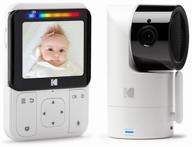
Video baby monitor Kodak CHERISH C225, black

19 Review
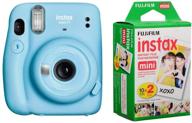
📸 Fujifilm Instax Mini 11 Sky Blue Instant Film Camera - Includes Fujifilm Instax Mini Instant Daylight Film Twin Pack (20 Exposures)

11 Review
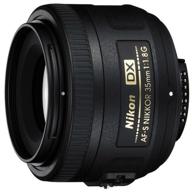
📷 Nikon 35mm f/1.8G AF-S DX Nikkor Lens - Black

46 Review
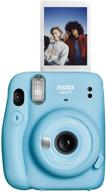
Fujifilm Instax Mini 11 Instant Camera - Sky Blue, Portable 4.8" x 4.2" x 2.6" Camera

11 Review





